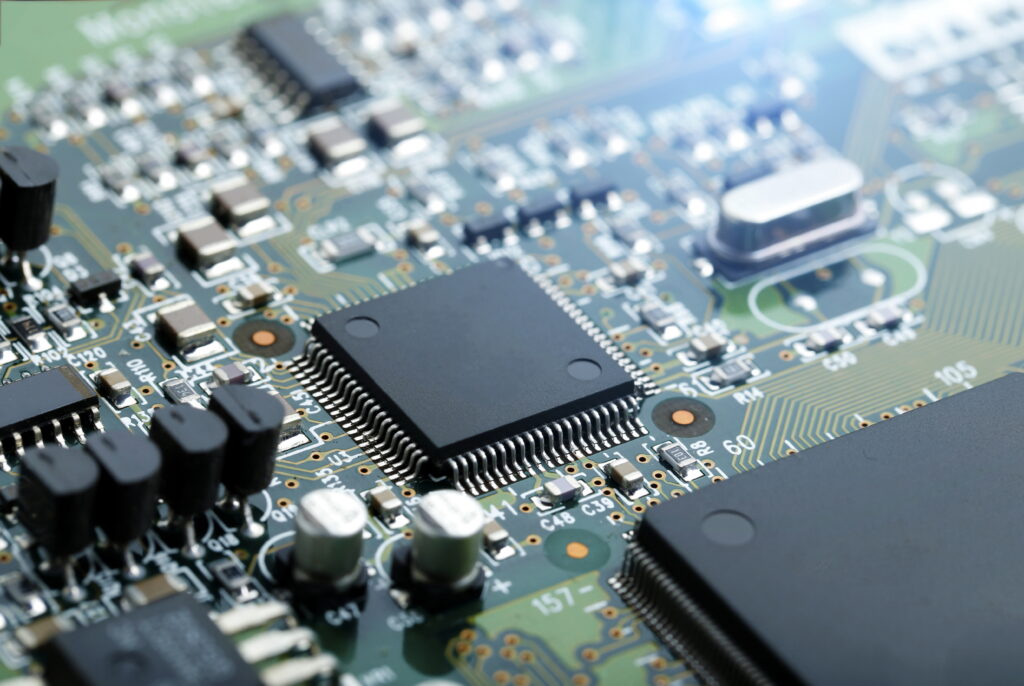ASML’s sharp downward revision triggered an immediate market reaction, laying bare several vulnerabilities of the semiconductor supply chain, particularly for the world’s largest chipmakers, and reverberations are being felt across the entire ecosystem.

In mid-October 2024, Dutch computer chip equipment maker ASML Holding, one of Europe’s leading tech manufacturers, sent shockwaves across the semiconductor industry by releasing a weaker-than-expected financial outlook for 2025. ASML’s sharp downward revision triggered an immediate market reaction, causing a significant drop in its stock price – 16% in a single day, the largest decline since 1998.
This development has since laid bare several vulnerabilities of the semiconductor supply chain, particularly for the world’s largest chipmakers: Taiwan Semiconductor Manufacturing Company (TSMC), Samsung, and Intel, all of whom are key customers of ASML. Reverberations are being felt across the entire ecosystem, with critical supply chain dynamics coming into sharper focus.
Adjusting to a Post-Pandemic Market
In the post-pandemic world, semiconductor manufacturers have faced a tricky market. The explosive demand for electronics during the COVID-19 pandemic led to significant investments in chip production capacity. However, demand has since cooled, especially for consumer electronics. Now, the focus has shifted toward improving manufacturing processes and creating chips for emerging technologies like AI, 5G, and autonomous vehicles. But overall demand recovery has been slower than anticipated, with sectors like automotive chips and industrial IoT showing more promise than consumer electronics.
This gradual recovery has left key chipmakers like TSMC and Samsung treading much more carefully, scaling back expansion plans while working to boost profitability through technological innovation. Intel, for instance, has seen delays in launching its next-generation products due to supply chain constraints, underscoring said complexities.
ASML has a key role in this global ecosystem as the dominant supplier of extreme ultraviolet (EUV) lithography machines – critical technology for producing the world’s most advanced semiconductors. The company’s customers, which include giants like TSMC, Intel, and Samsung, rely heavily on these machines to fabricate cutting-edge chips, especially as demand for artificial intelligence (AI) and high-performance computing surges.
A Tale of Competitive Pressures
ASML’s most recent earnings report, hot on investor monitors throughout the globe, revealed third-quarter net sales of €7.5 billion – marginally surpassing expectations. However, the alarming figure was the order book, where net bookings for the quarter stood at €2.6 billion – well below the €4-6 billion forecasted by analysts – pointing to the cautious stance of chipmakers amid uncertainty in broader market conditions.
The company said that despite a boom in AI-related chips, other parts of the semiconductor market are weaker for longer than expected, leading companies that make logic chips to delay orders and customers that make memory chips to only plan “limited” new capacity additions, Reuters reported.
Several factors contributed to ASML’s bleak guidance for 2025. Many semiconductor manufacturers, including Intel and Samsung, have delayed capital expenditures as global demand for consumer electronics, smartphones, and PCs remains below expectations. Intel, for instance, has postponed purchases of ASML’s lithography equipment as part of broader efforts to save $10 billion by 2025, including workforce reductions. Samsung has similarly deferred taking delivery of ASML’s equipment for its US factory.
ASML’s future outlook is also deeply intertwined with global geopolitical dynamics, especially US-China relations. The United States, backed by allies, has enacted stringent export controls to prevent China from acquiring the technology required to produce cutting-edge semiconductors, citing national security concerns. These controls limit ASML’s ability to sell its EUV systems – the crown jewel of chip manufacturing technology – to Chinese customers. While ASML can still sell older, deep ultraviolet (DUV) lithography machines to China, this restriction curtails its revenue potential from one of the largest semiconductor markets in the world.
The Netherlands has been caught in the geopolitical crossfire, with its government being pressured by the US to follow similar export restrictions on semiconductor equipment to China. This adds another layer of uncertainty to ASML’s business, particularly as competition intensifies for dominance in the global chipmaking market.
Both TSMC and Samsung, two of the largest semiconductor manufacturers globally, also find themselves in the crosshairs of those intensifying geopolitical tensions, with the US government imposing strict export controls on advanced chipmaking technologies, restricting the sale of ASML’s EUV machines to China. TSMC, which derives a significant portion of its revenue from Chinese customers, has had to tread carefully, balancing its US ties while trying to maintain its market share in China.
In 2023 TSMC reported a 20% drop in its capital expenditures citing ongoing geopolitical risks and fluctuating global demand. The Taiwanese chip giant is, however, committed to staying ahead of the curve in AI and 3-nanometer process technology, both of which require ASML’s lithography machines. But with the US-China technology war continuing, TSMC’s long-term strategy could be further complicated by potential supply chain disruptions.
Samsung, on the other hand, has delayed certain expansion projects in the US following ASML’s warning, signalling concerns over future orders. This could be a result of supply chain disruptions, global demand softness, and the possibility of more US regulatory changes regarding chip exports to China.
Apart from this, several memory chipmakers, including South Korean companies SK Hynix and Samsung, have also shifted their focus from expanding production capacity to technological innovation. This shift has also led to a scaling back of orders for ASML’s lithography machines, particularly as the industry grapples with declining memory prices and sluggish demand recovery.
ASML’s 2025 forecast hints at more conservative capital expenditure planning by its customers. As chipmakers like TSMC, Samsung, and Intel weigh the implications of US-China tensions, supply chain risks, and fluctuating demand, the semiconductor industry faces a challenging period. ASML will likely need to rely on longer-term growth drivers such as AI, high-performance computing, and automotive chips to offset the cyclical downturn in consumer electronics. Furthermore, geopolitical tensions, particularly between the US and China, are likely to persist, and ASML’s reliance on advanced markets like the US, Taiwan, and South Korea will remain key to its growth trajectory. How the company adapts to these global pressures – both in terms of regulatory constraints and market demand – will be critical in determining its success in the years to come.


